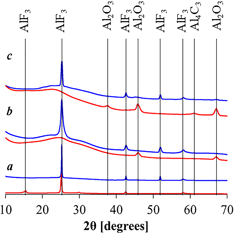Crossref Citations
This article has been cited by the following publications. This list is generated based on data provided by
Crossref.
Kudryashova, Olga
Lerner, Marat
Vorozhtsov, Alexander
Sokolov, Sergei
and
Promakhov, Vladimir
2021.
Review of the Problems of Additive Manufacturing of Nanostructured High-Energy Materials.
Materials,
Vol. 14,
Issue. 23,
p.
7394.
Pisharath, Sreekumar
Ong, Yew Jin
and
Hng, Huey Hoon
2022.
Nanoenergetic Composites with Fluoropolymers: Transition from Powders to Structures.
Molecules,
Vol. 27,
Issue. 19,
p.
6598.
Gooneratne, Ruchinda
and
Iroh, Jude O.
2022.
Thermomechanical and Pre-Ignition Properties of Multicomponent Poly(Vnylidene Fluoride)/Aluminum Oxide/Single-Walled Carbon Nanotube Hybrid Nanocomposites.
Journal of Composites Science,
Vol. 6,
Issue. 12,
p.
380.
Craig, Ashton W.
Knott, Matthew C.
Shankar, Rahul
Morgan, Sarah E.
Peloquin, Andrew J.
and
McCollum, Jena M.
2022.
Expanding Fluorinated‐Energetic Feedstock for Fused Deposition Modeling.
Advanced Engineering Materials,
Vol. 24,
Issue. 2,
Kudryashova, Olga
Toropkov, Nikita
Lerner, Marat
Promakhov, Vladimir
Vorozhtsov, Alexander
and
Mironov, Evgeny
2023.
Mathematical modeling of high-energy materials rheological behavior in 3D printing technology.
Heliyon,
Vol. 9,
Issue. 1,
p.
e12026.
Kim, Ho Sung
and
Kim, Soo Hyung
2023.
Additive Manufacturing and Combustion Characteristics of Polyethylene Oxide/Aluminum/Copper Oxide-Based Energetic Nanocomposites for Enhancing the Propulsion of Small Projectiles.
Nanomaterials,
Vol. 13,
Issue. 6,
p.
1052.
Zong, Hu-zeng
Zhang, Peng
Yao, Jing-xiao
Hao, Ga-zi
Wang, Su-wei
Zhang, Guang-pu
Ren, Hao
Xiao, Lei
and
Jiang, Wei
2024.
Effect of Printing Parameters on the Surface Roughness of 3D-Printed Melt-Cast Explosive Substitutes Based on Melt Extrusion Technology.
3D Printing and Additive Manufacturing,
Vol. 11,
Issue. 3,
p.
e1394.
Zong, Hu-zeng
Wang, Su-wei
Ren, Hao
Hao, Ga-zi
Xiao, Lei
and
Jiang, Wei
2024.
Energetic materials in 3D: an in-depth exploration of additive manufacturing techniques.
The International Journal of Advanced Manufacturing Technology,
Vol. 133,
Issue. 7-8,
p.
3059.
Iida, Tsubasa
Hasegawa, Hiroyuki
Yamaguchi, Masayuki
Matsumura, Kazuaki
Hayakawa, Mayo
and
Tsugawa, Naoya
2025.
Development of gradient structure in miscible PMMA/PVDF blends under temperature gradient.
Polymer,
Vol. 325,
Issue. ,
p.
128298.
